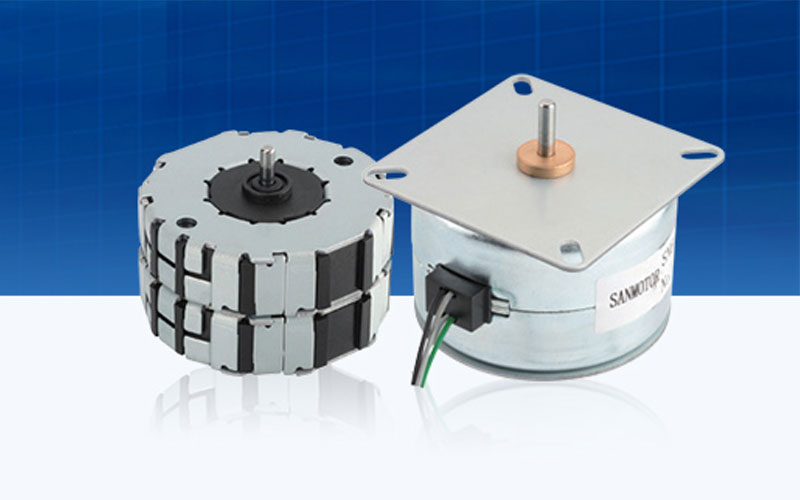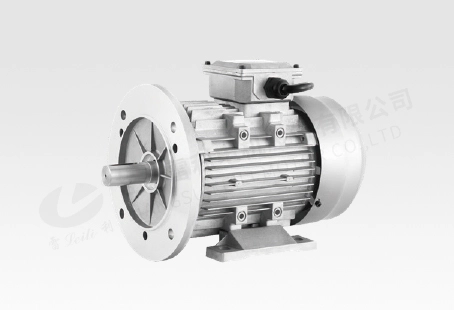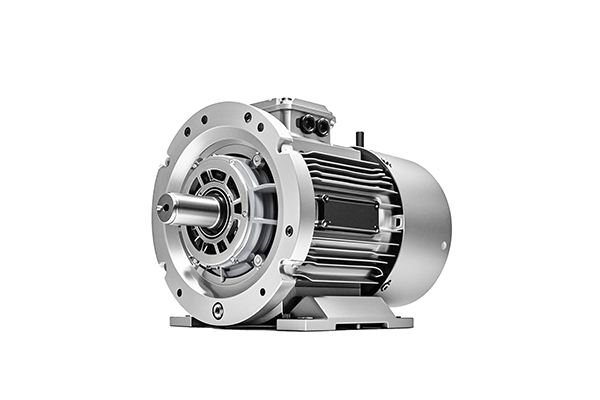Synchronous motors play a vital role in various industrial applications, from large-scale power plants to small precision equipment. Among the different types of synchronous motors, the most commonly discussed are Permanent Magnet Synchronous Motors (PMSM), Reluctance Synchronous Motors (RSM), and Hysteresis Synchronous Motors (HSM). Each of these motors has unique characteristics and is suited for different applications based on their efficiency, cost, torque production, and control mechanisms.
This article will compare these three types of synchronous motors, focusing on their design, operation principles, advantages, limitations, and suitable applications. We will also examine real-world cases and provide relevant data to help you make an informed decision when selecting a motor for your specific needs.

Overview of Synchronous Motors
Synchronous motors are made to run at a steady pace, which is closely correlated with the motor’s pole count and supply voltage frequency. Synchronous motors, as opposed to asynchronous motors (induction motors), keep up with the supply current, allowing them to rotate at a steady pace independent of the load. This feature makes them highly reliable and precise in applications requiring constant speed.
Let’s explore the three main types of synchronous motors in more detail:

Permanent Magnet Synchronous Motor (PMSM)
Design and Operation
In a Permanent Magnet Synchronous Motor (PMSM), the rotor is made from permanent magnets, which provide a magnetic field to interact with the stator’s magnetic field. The term “synchronous” describes a situation in which the supply frequency and the rotor’s rotation speed are in sync. PMSMs are commonly employed in situations where low energy consumption and great efficiency are essential.
Key Features:
- High efficiency: Permanent magnets eliminate the need for rotor winding and the associated losses.
- Compact design: The absence of additional rotor components leads to smaller, lighter motors.
- High torque density: PMSMs can deliver high torque in a small form factor.
- Reduced losses: The absence of copper losses in the rotor improves the motor’s efficiency.
Applications:
- Electric vehicles
- Robotics
- HVAC systems
- Industrial automation
Advantages:
- Energy efficiency: PMSMs are among the most energy-efficient motors due to the high magnetic field strength provided by permanent magnets.
- Precise control: The torque and speed of PMSMs can be accurately controlled using advanced drives.
- Compact and lightweight: Perfect for uses where weight and space are limited, such those in the aerospace or automobile sectors.
Limitations:
Cost of magnets: The use of rare-earth permanent magnets (such as neodymium) increases the motor’s initial cost.
Temperature sensitivity: High operating temperatures can demagnetize the permanent magnets, reducing the motor’s performance.
Data and Case Study
One case where PMSMs excel is in electric vehicles (EVs). For instance, Tesla uses PMSMs in their Model 3 vehicles, providing an optimal combination of power, efficiency, and durability. PMSMs can achieve efficiency levels greater than 90%, significantly enhancing the vehicle’s overall energy consumption, which is crucial for maximizing driving range.
Key Data for PMSM:
- Efficiency: 85% to 98%
- Torque Density: 2 to 4 Nm/kg
- Speed Range: 1,000 to 20,000 RPM
- Power Output: 0.1 to 200 kW
- Temperature Tolerance: Typically 120°C to 180°C

Reluctance Synchronous Motor (RSM)
Design and Operation
Reluctance Synchronous Motors (RSMs) are based on the principle of reluctance torque, where the rotor is made of a ferromagnetic material but lacks permanent magnets. The rotor aligns with the stator’s magnetic field using reluctance torque, which is produced by the stator’s alternating current inducing the rotor’s magnetic field.
RSMs are further categorized into two types:
- Salient-pole rotor: The rotor has projecting poles that provide varying reluctance as it rotates.
- Non-salient-pole rotor: The rotor has a smooth cylindrical shape, and reluctance is uniformly distributed.
Key Features:
- No permanent magnets: RSMs do not require expensive rare-earth magnets, reducing cost.
- Simple construction: The rotor structure is simple and robust, which leads to fewer maintenance issues.
- Variable reluctance: The rotor’s magnetic reluctance changes as it rotates, which allows it to maintain synchronization with the stator.
Applications:
- High-power industrial applications
- Power plants
- Pumps and compressors
- Fans and blowers
Advantages:
- Cost-effective: RSMs do not require expensive permanent magnets, making them more affordable than PMSMs.
- Reliability: The absence of magnets means RSMs are less prone to demagnetization, offering better longevity.
- High torque at low speeds: RSMs are appropriate for heavy-load applications because they can effectively generate high torque at reduced speeds.
Limitations:
- Complex control: Reluctance motors require sophisticated control methods to maintain synchronous operation, such as a high-performance inverter.
- Lower efficiency than PMSM: RSMs are generally less efficient than PMSMs because the magnetic flux in the rotor is not as strong.
Data and Case Study
One application of RSMs is in the steel industry, where they are used in rolling mills and other high-power processes. The efficiency of RSMs in these applications ensures energy savings and reliability, while their robust design handles the heavy mechanical stresses encountered.
Key Data for RSM:
- Efficiency: 80% to 90%
- Torque Density: 1 to 3 Nm/kg
- Speed Range: 1,000 to 10,000 RPM
- Power Output: 5 to 500 kW
- Temperature Tolerance: Up to 200°C
Hysteresis Synchronous Motor (HSM)
Design and Operation
Hysteresis Synchronous Motors (HSMs) operate based on the hysteresis effect of magnetic materials. The rotor of an HSM is made from a special magnetic material with high hysteresis losses. When subjected to an alternating magnetic field, the rotor magnetizes and demagnetizes in response to the stator’s field, which enables it to maintain synchronous speed.
Unlike PMSMs and RSMs, the torque in HSMs is produced due to the lag in magnetization (hysteresis), which makes them ideal for precise speed control.
Key Features:
- Simplicity: HSMs have a simple rotor structure, making them cost-effective and reliable.
- Excellent speed control: HSMs can provide smooth and precise speed control.
- No need for excitation: These motors do not require external excitation, as they inherently generate the necessary magnetic field.
Applications:
- Precision instruments
- Clocks and timers
- Scientific equipment
- Small machinery requiring precise speed control
Advantages:
- High torque at low speeds: HSMs are ideal for precision applications because of their exceptional ability to deliver torque at low speeds.
- Smooth operation: During operation, there are very little vibrations and noises due to the smooth torque production.
- Simplicity and reliability: The lack of complex components makes HSMs highly reliable and easy to maintain.
Limitations:
Lower efficiency: Due to hysteresis losses, HSMs tend to have lower efficiency compared to PMSMs and RSMs.
Limited power output: HSMs are generally used for low-power applications and are not suited for high-power industries.
Data and Case Study
Hysteresis Synchronous Motors are often used in precision equipment like clocks and timers, where their ability to maintain an exact rotational speed is crucial. In these situations, its low-speed operation is especially advantageous.
Key Data for HSM:
- Efficiency: 60% to 80%
- Torque Density: 0.5 to 1.5 Nm/kg
- Speed Range: 100 to 1,000 RPM
- Power Output: Up to 10 kW
- Temperature Tolerance: 100°C to 150°C
Comparative Chart: Key Characteristics
| Feature | PMSM | RSM | HSM |
| Efficiency | 85% to 98% | 80% to 90% | 60% to 80% |
| Torque Density | 2 to 4 Nm/kg | 1 to 3 Nm/kg | 0.5 to 1.5 Nm/kg |
| Speed Range | 1,000 to 20,000 RPM | 1,000 to 10,000 RPM | 100 to 1,000 RPM |
| Power Output | 0.1 to 200 kW | 5 to 500 kW | Up to 10 kW |
| Applications | EVs, robotics, HVAC | Heavy industry, power plants | Precision equipment, clocks |
| Cost | High (due to magnets) | Moderate | Low (simple construction) |
Conclusion: Choosing the Right Motor
When selecting between Permanent Magnet Synchronous Motors (PMSM), Reluctance Synchronous Motors (RSM), and Hysteresis Synchronous Motors (HSM), the decision should be based on the specific application requirements:
- PMSMs are ideal for applications requiring high efficiency, precision, and compactness, such as in electric vehicles and robotics.
- RSMs are better suited for industrial applications with high power demands, where cost-effectiveness and robustness are more important than the highest efficiency.
HSMs are best for low-power, precision applications, where smooth and constant speed is necessary, such as in scientific instruments and small machinery.
Each motor type is tailored to meet specific operational requirements and offers distinct advantages. By understanding its features and limitations, you can select the motor that best aligns with your needs for efficiency, cost-effectiveness, and performance.

